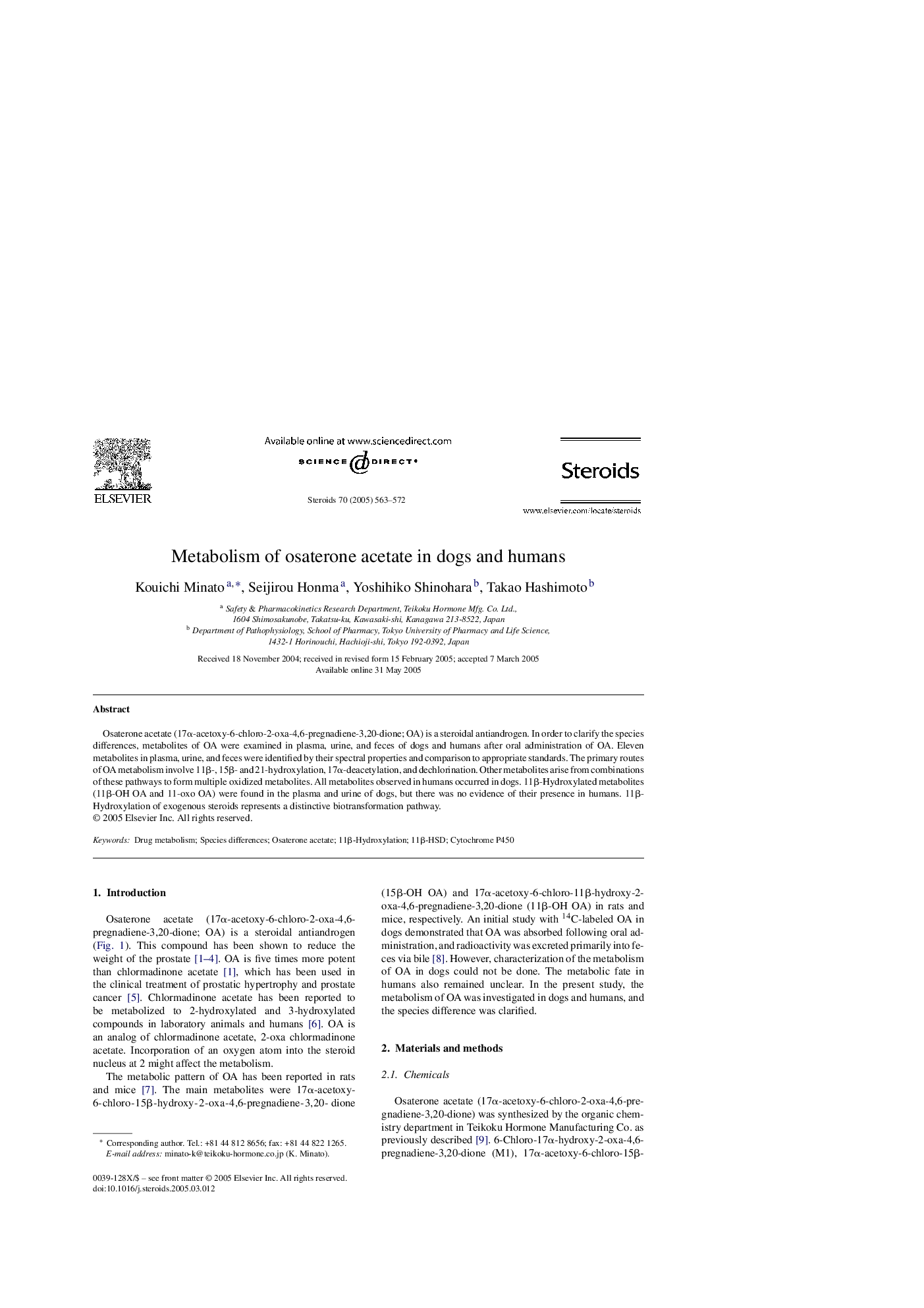| Article ID | Journal | Published Year | Pages | File Type |
|---|---|---|---|---|
| 10847852 | Steroids | 2005 | 10 Pages |
Abstract
Osaterone acetate (17α-acetoxy-6-chloro-2-oxa-4,6-pregnadiene-3,20-dione; OA) is a steroidal antiandrogen. In order to clarify the species differences, metabolites of OA were examined in plasma, urine, and feces of dogs and humans after oral administration of OA. Eleven metabolites in plasma, urine, and feces were identified by their spectral properties and comparison to appropriate standards. The primary routes of OA metabolism involve 11β-, 15β- and 21-hydroxylation, 17α-deacetylation, and dechlorination. Other metabolites arise from combinations of these pathways to form multiple oxidized metabolites. All metabolites observed in humans occurred in dogs. 11β-Hydroxylated metabolites (11β-OH OA and 11-oxo OA) were found in the plasma and urine of dogs, but there was no evidence of their presence in humans. 11β-Hydroxylation of exogenous steroids represents a distinctive biotransformation pathway.
Related Topics
Life Sciences
Biochemistry, Genetics and Molecular Biology
Biochemistry
Authors
Kouichi Minato, Seijirou Honma, Yoshihiko Shinohara, Takao Hashimoto,
